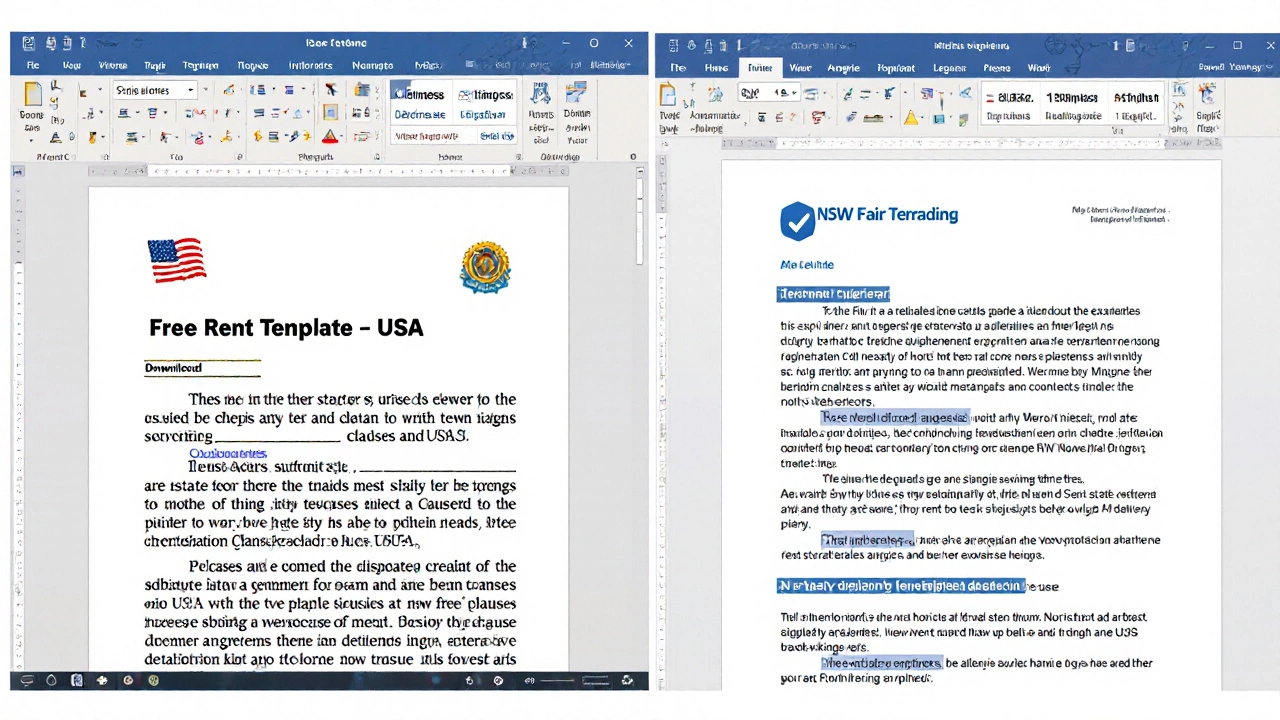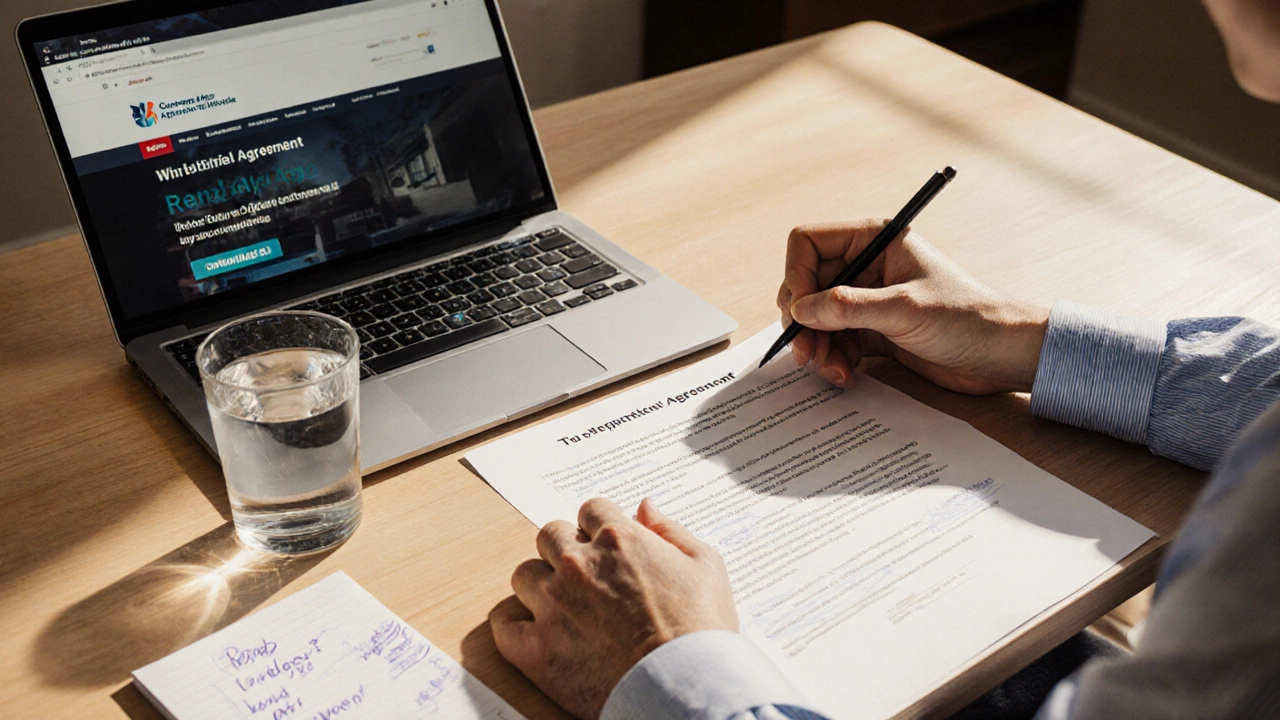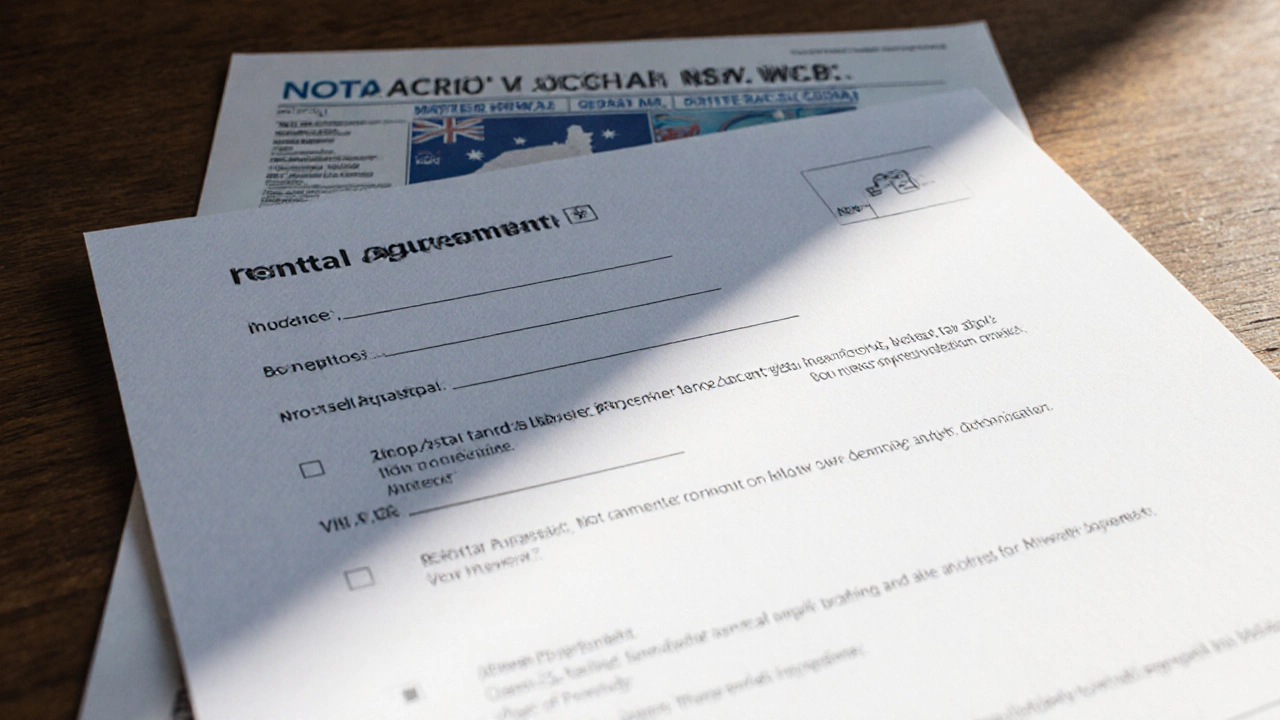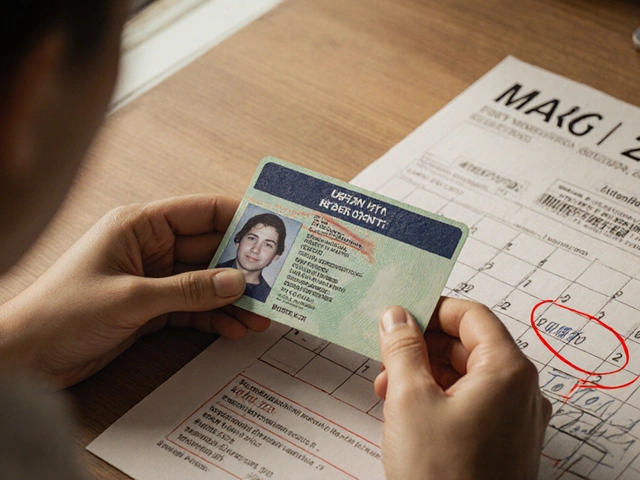If you're renting out a property in Australia, you probably need a solid rental agreement. But before you start typing from scratch or download some random PDF from the internet, you might be wondering: Does Microsoft Word have a contract template for house rent agreements? The short answer is yes-but not the way you might think.
Microsoft Word doesn’t offer a pre-built rent agreement template
You won’t find a template called "House Rent Agreement" when you open Word and click "New." Microsoft doesn’t include specific rental contracts in its default template library. That’s because rental laws vary by state, and Microsoft can’t legally provide a one-size-fits-all document that complies with every Australian state’s tenancy rules.Instead, Word gives you blank documents and basic business templates like "Invoice," "Proposal," or "Letter." You won’t see anything labeled "Lease Agreement," "Rental Contract," or "Tenancy Agreement" under the official templates. So if you’re expecting a ready-to-use form with all the legal clauses already filled in, you’re out of luck.
But you can find free, reliable templates online
The good news? You don’t have to start from zero. Government housing agencies and legal aid groups in Australia publish free, state-specific rental agreement templates in Word (.docx) format. These are legally sound, updated regularly, and designed for everyday landlords and tenants.For example:
- In New South Wales, the NSW Fair Trading site offers a downloadable Residential Tenancy Agreement in Word.
- In Victoria, Consumer Affairs Victoria provides a standard form tenancy agreement that you can copy into Word.
- In South Australia, the Consumer and Business Services website has a template you can download and edit.
These aren’t hidden gems-they’re official resources. You can search for "[Your State] residential tenancy agreement template Word" and find them easily. Download one, open it in Word, and fill in your details: names, address, rent amount, bond, lease term, and rules.
Why you shouldn’t use random Word templates from Google
There are thousands of "free rent agreement templates" on random websites. Some look professional. Some even say they’re "Australia-approved." But most are outdated, copied from U.S. or U.K. laws, or missing key clauses required under Australian tenancy law.Here’s what can go wrong:
- A template says you can increase rent every 6 months-but in NSW, you can only do it once every 12 months after the first 12 months of the lease.
- It doesn’t mention the bond must be lodged with the state’s tenancy bond authority (like NSW Fair Trading or Consumer Affairs Victoria).
- It includes a clause that bans pets-but under the new national rules, landlords can’t refuse pets without a valid reason.
Using a template from an unverified source could leave you without legal protection if a dispute arises. Courts in Australia rely on state-specific tenancy acts. If your contract doesn’t follow them, it might be unenforceable.

How to turn a downloaded template into a legally valid contract
Once you’ve downloaded the official template from your state’s government site, open it in Word. Here’s what to check:- Parties - Full legal names of landlord and tenant(s). No nicknames.
- Property address - Exact address, including unit number if applicable.
- Start and end date - Fixed term or periodic? Make sure it’s clear.
- Rent amount and payment schedule - Weekly, fortnightly? Due on what day?
- Bond amount - Must match state limits (e.g., max 4 weeks’ rent in most states).
- Bond lodgment - Must state that the bond will be lodged with the official authority.
- Conditions - Pets, smoking, alterations, maintenance responsibilities.
- Termination notice periods - Must follow state law (usually 14-90 days depending on reason).
Don’t delete or change any clauses that reference the state’s tenancy act. Those are there for a reason.
What to do if you’re renting out multiple properties
If you’re a landlord with several properties, you might want to create a reusable template. Save your completed agreement as a Word template (.dotx) file. That way, every time you need a new contract, you open the template instead of starting over.Pro tip: Add a header with your name, phone, and property address. Include a footer with the date signed. Keep a digital and printed copy for your records. In Australia, landlords must give tenants a signed copy within 14 days of signing.
Alternatives to Word templates
Some landlords use online platforms like MyRent, FormSwift, or LegalVision to generate contracts. These tools walk you through questions and auto-fill the correct clauses based on your state. They cost a few dollars, but they’re reliable and update automatically when laws change.Another option: Use your real estate agent. Most agents provide standard agreements as part of their service. If you’re using an agent, ask them to send you the template they use. It’s likely already compliant with local law.

What happens if you don’t use a written agreement?
In Australia, a verbal agreement is technically legal-but it’s risky. If a tenant stops paying rent, damages the property, or refuses to leave, you’ll struggle to prove the terms in court without a signed document.State tribunals like the NSW Civil and Administrative Tribunal (NCAT) or the Victorian Civil and Administrative Tribunal (VCAT) require written evidence. Without it, you might not get your bond back, or worse-you could be ordered to pay the tenant compensation for not providing a proper agreement.
Final checklist: Before you sign any rent agreement
Make sure your contract includes:- Full names and contact details of all parties
- Exact property address
- Start and end date of tenancy
- Rent amount, due date, and payment method
- Bond amount and confirmation it’s lodged with the state authority
- Conditions about pets, smoking, and alterations
- Notice periods for ending the lease
- Who pays for repairs and maintenance
- Signatures and dates from both landlord and tenant
And always keep a copy. Digital is fine, but print one and have both parties sign it. In Australia, signed paper copies are still the gold standard in legal disputes.
Is Microsoft Word useful for rental agreements at all?
Yes-but only as a tool to edit and print official templates. Word is great for formatting, adding your details, and printing. But it’s not a source of legal content. Think of it like a car: useful for getting you where you need to go, but you still need the map (the official template) to know the right route.Don’t waste time trying to build a rental agreement from scratch in Word. Find the official template from your state’s government website, open it in Word, fill in the blanks, sign it, and move on. Your future self-and your tenant-will thank you.
Does Microsoft Word have a built-in rental agreement template?
No, Microsoft Word does not include a pre-built rental agreement template in its default library. While Word has business templates like invoices or proposals, it doesn’t offer state-specific tenancy contracts because rental laws vary across Australia. You need to download an official template from your state’s government housing authority.
Where can I find a free, legal rent agreement template in Word?
Each Australian state provides free, legally compliant rental agreement templates. Search for "[Your State] residential tenancy agreement template Word". For example: NSW Fair Trading, Consumer Affairs Victoria, or Consumer and Business Services in South Australia. These are official government resources, updated regularly, and safe to use.
Can I use a rental agreement template from the internet?
Be careful. Many websites offer templates that are outdated, based on U.S. or U.K. laws, or missing key Australian requirements. Using an unverified template could make your contract unenforceable. Always use templates from government sites or licensed providers like MyRent or LegalVision.
Do I need a written rental agreement in Australia?
Yes. While verbal agreements are technically legal, they’re extremely risky. If a dispute arises-like unpaid rent or property damage-you won’t have proof of agreed terms. State tribunals require written documentation. Always use a signed, written agreement.
What happens if I don’t lodge the bond with the state authority?
Failing to lodge the bond with your state’s tenancy bond authority (like NSW Fair Trading or Consumer Affairs Victoria) is a legal breach. You could be fined, forced to pay the tenant compensation, or lose your right to claim damages at the end of the lease. Always lodge the bond within the required time frame-usually 7-14 days after receiving it.
Can I change the clauses in the government template?
You can fill in your details (names, rent amount, dates), but don’t delete or rewrite clauses that reference state tenancy laws. Those are there to ensure legal compliance. If you want to add extra rules (like a no-smoking clause), make sure they don’t contradict the law. When in doubt, consult a tenancy lawyer or your state’s housing authority.





